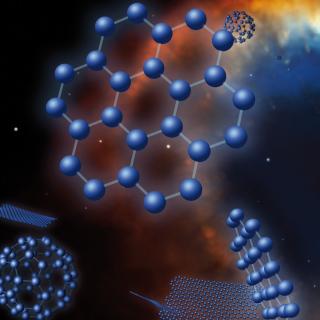General
The principal objectives of this project are: 1) to study the structure and dynamics of the solar interior, 2) to extend this study to other stars, 3) to search for extrasolar planets using photometric methods (primarily by transits of their host stars) and their characterization (using radial velocity information) and 4) the study of the planetary atmospheres.
To reach our first objective, we use Global Helioseismology (analysis of the solar oscillation eigenmodes) and Local Helioseismology (that uses travel waves). Solar seismology allows to accurately infer information about the internal structure and dynamics of the Sun,. This project covers the various necessary aspects to attain the aforementioned objectives: instrumental, observational, reduction, analysis and interpretation of data and, finally, theoretical developments of inversion techniques and development of structure and evolution models.
On the other hand, the Astroseismology aims to obtain a similar knowledge of other stars. Thanks to the huge number of stars observed by CoRoT, Kepler and TESS space missions it is possible to extract seismic global parameters of hundreds of stars; both solar type and red giants. Furthermore, the recent deployment and beginning of observations with the high precision spectrographs of the SONG (Stellar Observations Network Group) ground-based telescopes will substantially improve the characterization of the eigenmodes spectrum in bright stars.
The strategy of using planetary transits to discover new planets around other stars consists of the photometric detection of the dimming of the light of the star when one of its planets passes, or ‘transits’ in front of it. Currently this method is the preferred one for the study of small planets, not only due to its sensitivity, but also because this method allows a more detailed investigation of the planets found (e.g. Planetary atmospheres). This technique is similar to the one that is used for helio- and asteroseismology and so some of its methods are a logical extension from that. However, it is also important to develop new algorithms and observing methods for the unequivocal detection and analysis of planets and to be able to distinguish them from false alarms.
The current horizon for studies of exoplanets with space missions involves new missions, beginning with the launch of CHEOPS, followed by TESS, JWST and in 2026, PLATO. Thus, there is presently a window of opportunity for ground-based facilities, and we are pursuing observations using mainly TNG, NOT y GTC.
Members
Results
Milestones
- Members of the team (P. G. Beck, H. Deeg, S. Mathur, F. H. Perez, C. Regulo) were involved in the discovery and characterization of a warm Saturn transiting a slightly evolved solar-like star (HD 89345) observed with the NASA K2 mission and confirmed with RV measurements. The seismic analysis of the star led to precise estimates of the stellar parameters.
- P.G.Beck lead two papers on binary systems hosting red-giant binaries, using asteroseismic techniques and data from the Kepler space telescope. Beck et al (2018a,b) allow a better understanding of the stellar structure of the stellar components, and the tidal interaction in binary systems. The internal mixing was investigated through measurements lithium.
- S. Mathur participated in the analysis of the first planet discovered with the NASA TESS mission, orbiting the star Pi Men. The seismic analysis led to a very marginal detection but gave a hint of the asteroseismic potential with the TESS data (Gandolfi et al. 2018).
- Project "Solar-SONG". For the first time, stellar instrumentation (SONG spectrograph) has been used to obtain precise measurements of the radial velocity of the Sun with high temporal cadence (4 sec.) and long duration (57 consecutive days) to allow the detailed study of the spectrum of oscillations ( p-modes) and obtain their global parameters
- The researchers Hans J. Deeg and Juan Antonio Belmonte coordinated the edition of the "Handbook of Exoplanets", four volumes with 160 articles by more than 300 specialists in exoplanetology. Three years of intensive work have resulted in a complete documentation on the state of the art of the studies of the planets beyond the Solar System.



